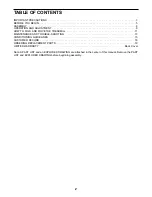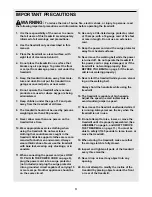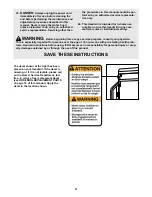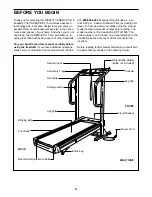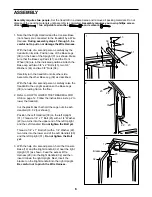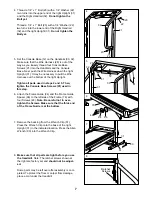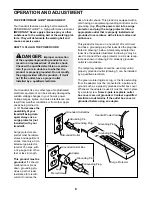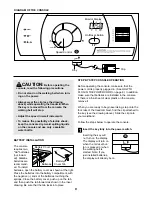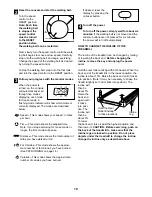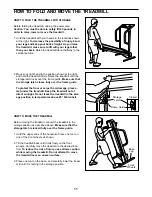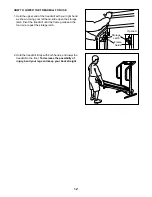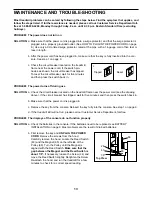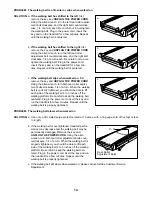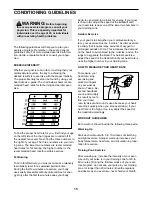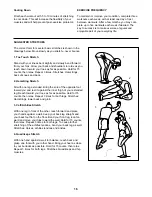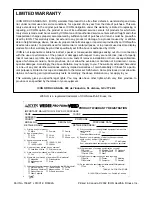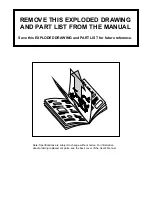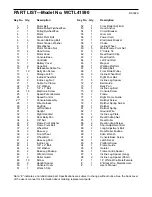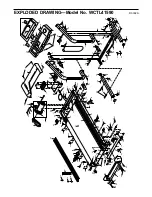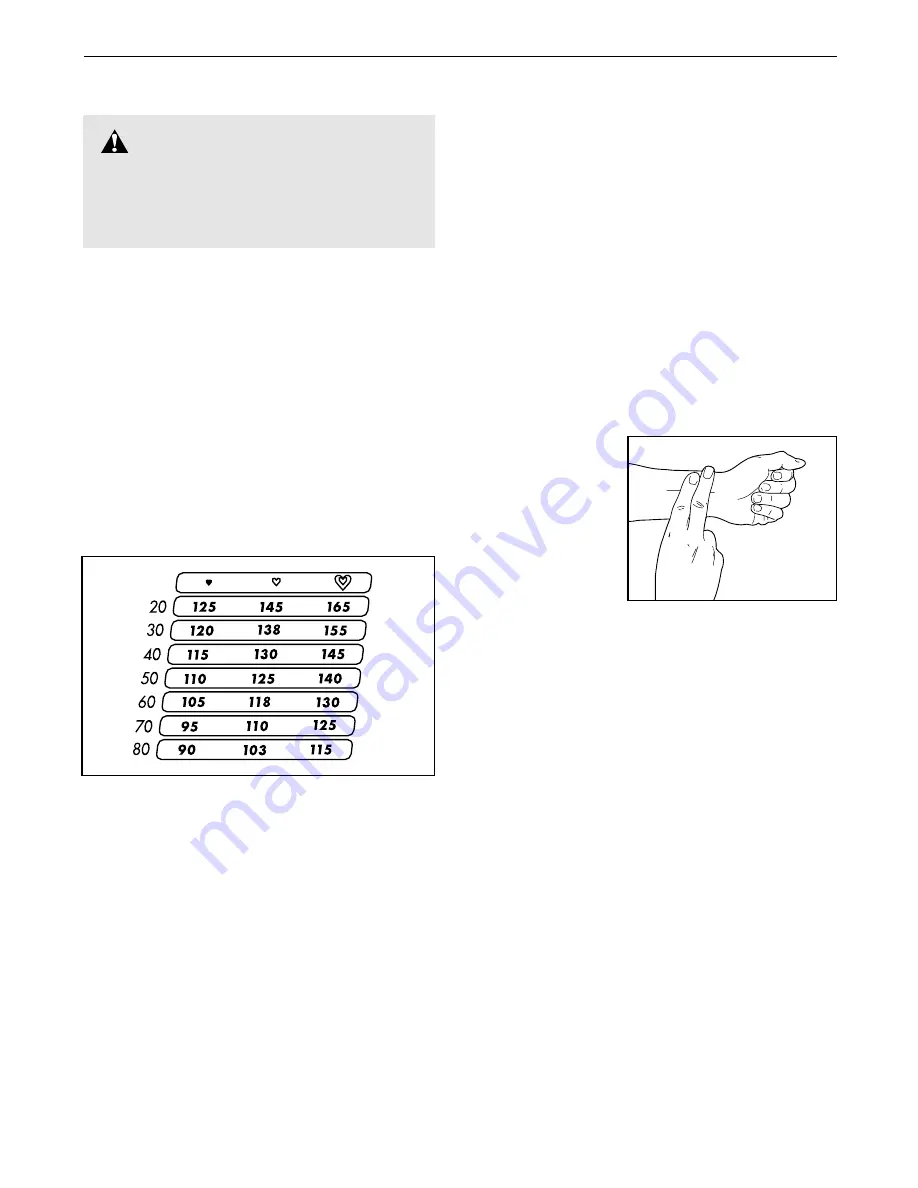
15
CONDITIONING GUIDELINES
The following guidelines will help you to plan your
exercise program. Remember—these are general
guidelines only. For more detailed exercise informa-
tion, obtain a reputable book or consult your physi-
cian.
EXERCISE INTENSITY
Whether your goal is to burn fat or to strengthen your
cardiovascular system, the key to achieving the
desired results is to exercise with the proper intensity.
The proper intensity level can be found by using your
heart rate as a guide. The chart below shows recom-
mended heart rates for fat burning and aerobic exer-
cise.
To find the proper heart rate for you, first find your age
on the left side of the chart (ages are rounded off to
the nearest ten years). Next, find the three numbers to
the right of your age. The three numbers are your rain-
ing zone. The lower two numbers are recommended
heart rates for fat burning; the higher number is the
recommended heart rate for aerobic exercise.
Fat Burning
To burn fat effectively, you must exercise at a relatively
low intensity level for a sustained period of time.
During the first few minutes of exercise, your body
uses easily accessible carbohydrate calories for ener-
gy. Only after the first few minutes does your body
begin to use stored fat calories for energy. If your goal
is to burn fat, adjust the speed of the treadmill until
your heart rate is near one of the lower two numbers in
your training zone.
Aerobic Exercise
If your goal is to strengthen your cardiovascular sys-
tem, your exercise must be “aerobic.” Aerobic exercise
is activity that requires large amounts of oxygen for
prolonged periods of time. This increases the demand
on the heart to pump blood to the muscles, and on the
lungs to oxygenate the blood. For aerobic exercise,
adjust the speed of the treadmill until your heart rate is
near the higher number in your training zone.
HOW TO MEASURE YOUR HEART RATE
To measure your
heart rate, stop
exercising and
place two fingers
on your wrist as
shown. Take a six-
second heartbeat
count, and multiply
the result by ten to
find your heart
rate. (A six-second count is used because your heart
rate drops quickly when you stop exercising.) If your
heart rate is too high or too low, adjust the speed of
the treadmill accordingly.
WORKOUT GUIDELINES
Each workout should include the following three parts:
Warming Up
Start each workout with 5 to 10 minutes of stretching
and light exercise. A proper warm-up increases your
body temperature, heart rate, and circulation in prepa-
ration for exercise.
Training Zone Exercise
After warming up, increase the intensity of your exer-
cise until your pulse is in your training zone for 20 to
60 minutes. (During the first few weeks of your exer-
cise program, do not keep your pulse in your training
zone for longer than 20 minutes.) Breathe regularly
and deeply as you exercise—never hold your breath.
WARNING:
Before beginning
this or any exercise program, consult your
physician. This is especially important for
individuals over the age of 35 or individuals
with pre-existing health problems.


